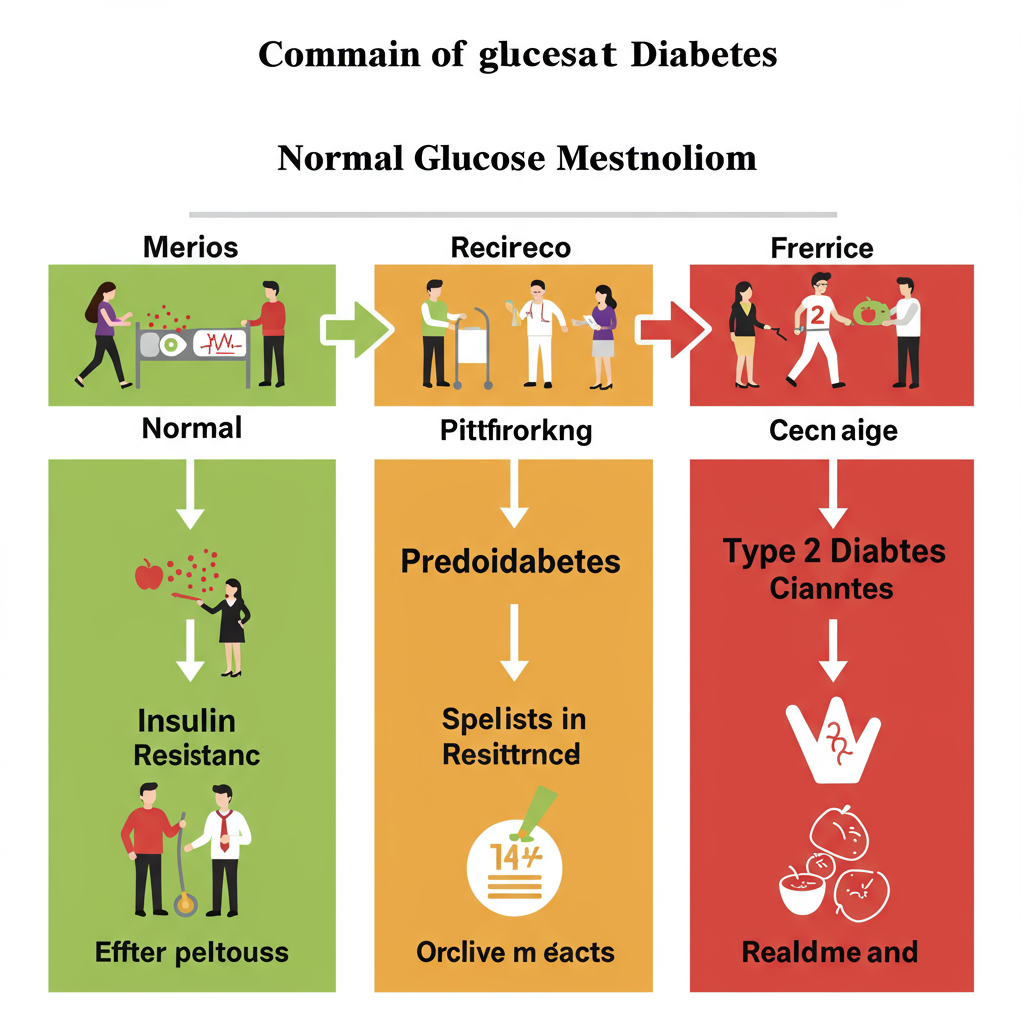Catching Diabetes Before It Catches You: Why Early Intervention Is Your Most Powerful Weapon
In the world of diabetes management, timing is everything. Just as a small ember is easier to extinguish than a raging fire, addressing diabetes at its earliest stages offers the greatest opportunity for control and even reversal. Today, I want to explore why the insulin resistance and prediabetes phases represent our golden opportunity for intervention—a window where lifestyle changes can make their most profound impact.
Understanding the Diabetes Continuum
Diabetes doesn't appear overnight. Rather than thinking of diabetes as something you either have or don't have, imagine it as a continuum:
- Normal glucose metabolism - Your body efficiently processes carbohydrates
- Insulin resistance - Your cells begin ignoring insulin's signals
- Prediabetes - Blood sugar levels are elevated but not yet diabetic
- Type 2 diabetes - Blood sugar levels consistently exceed normal thresholds
The transition from normal to diabetic can take years or even decades. This slow progression is actually good news—it gives us time to intervene.

Why Insulin Resistance Is the Critical Starting Point
Insulin resistance occurs when your body's cells don't respond properly to insulin. Think of insulin as a key that unlocks cells to let glucose enter. With insulin resistance, the locks on your cells start to change, making the key less effective.
At this stage, your pancreas compensates by producing more insulin. Your blood glucose might still appear normal on standard tests, but beneath the surface, metabolic disruption has begun.
Why this stage matters:
- No noticeable symptoms yet
- No permanent beta cell damage
- Completely reversible through lifestyle changes
- Provides the longest runway for intervention
The Prediabetes Window: Your Last Best Chance
Prediabetes is diagnosed when blood glucose levels are higher than normal but not high enough to qualify as diabetes. According to the CDC, approximately 96 million American adults—more than 1 in 3—have prediabetes, yet 80% don't know they have it.
Key statistics:
- Fasting blood glucose between 100-125 mg/dL
- A1C between 5.7-6.4%
- 5-10% of people with prediabetes progress to type 2 diabetes annually
- Without intervention, up to 70% will eventually develop diabetes
The prediabetes phase represents a critical warning signal—your body is telling you changes are needed now.

The Science Behind Early Intervention
Research consistently demonstrates that early intervention yields substantially better results. The landmark Diabetes Prevention Program (DPP) found that lifestyle modifications reduced diabetes risk by 58% among prediabetic individuals—far more effective than medications.
Why early intervention works better:
- Beta cell preservation - The insulin-producing cells in your pancreas haven't yet experienced significant damage
- Metabolic flexibility - Your body can still adapt to improved diet and exercise patterns
- Habit formation - Changing habits is easier before long-term patterns are established
- No medication dependence - Avoiding the need to start medications
The Most Effective Early Interventions
If you've been diagnosed with insulin resistance or prediabetes, these evidence-based strategies offer your best chance at reversing course:

1. Strategic Weight Management
Even modest weight loss can dramatically improve insulin sensitivity. The DPP found that losing just 7% of body weight reduced diabetes risk by 58%.
2. Targeted Physical Activity
Exercise improves insulin sensitivity independent of weight loss. Aim for:
- 150 minutes of moderate activity weekly
- 2-3 strength training sessions weekly
- Breaking up periods of sitting with light movement
3. Carbohydrate Quality and Quantity
Not all carbs are created equal:
- Focus on fiber-rich complex carbohydrates
- Limit refined carbohydrates and added sugars
- Consider carbohydrate distribution throughout the day
4. Sleep Optimization
Poor sleep directly impairs insulin sensitivity. Prioritize:
- 7-9 hours of quality sleep
- Consistent sleep/wake times
- Addressing sleep apnea if present
5. Stress Management
Chronic stress elevates cortisol, which increases insulin resistance:
- Mind-body practices (meditation, yoga)
- Regular relaxation practices
- Social connection
How to Know If You're at Risk
Given that insulin resistance often has no symptoms, proactive screening is essential. Consider testing if you:
- Are over 35 years old
- Have a family history of diabetes
- Are overweight or obese
- Have a history of gestational diabetes
- Have PCOS, cardiovascular disease, or sleep apnea
Standard tests include:
- Fasting plasma glucose
- A1C
- Oral glucose tolerance test
- HOMA-IR (for insulin resistance specifically)
The Takeaway: Act in the Window of Opportunity
The progression from insulin resistance to full diabetes resembles a slow-moving train—the earlier you apply the brakes, the easier it is to stop. Waiting until you have diabetes means contending with a condition that can be managed but rarely reversed.
The most effective "treatment" for diabetes will always be preventing it in the first place. If you've received an insulin resistance or prediabetes diagnosis, consider it not a sentence but an opportunity—perhaps the most important health opportunity you'll ever receive.
The science is clear: what you do today could determine whether diabetes becomes part of your story. The power to change that trajectory is greatest right now, in this moment, before diabetes fully develops.

References
-
Knowler WC, Barrett-Connor E, Fowler SE, et al. Reduction in the incidence of type 2 diabetes with lifestyle intervention or metformin. N Engl J Med. 2002;346(6):393-403. doi:10.1056/NEJMoa012512
-
American Diabetes Association. Prevention or delay of type 2 diabetes: Standards of Medical Care in Diabetes-2021. Diabetes Care. 2021;44(Suppl 1):S34-S39. doi:10.2337/dc21-S003






